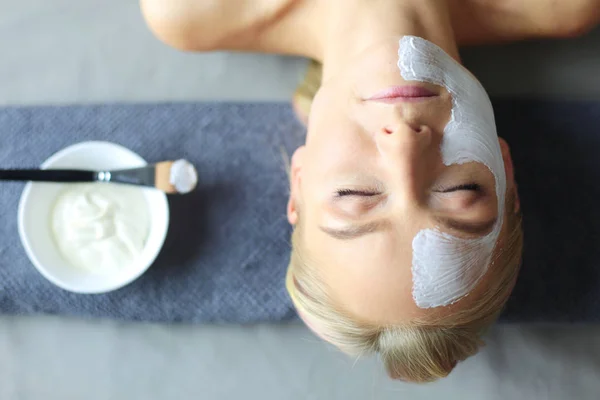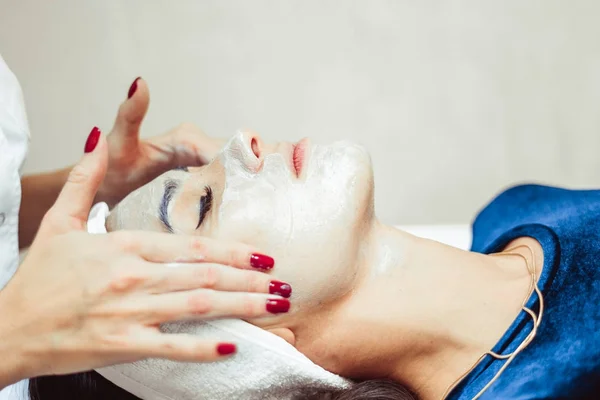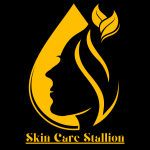What is AHA in skincare, and how does it benefit your complexion?
Unlock the secret to radiant, youthful skin with AHA in skincare! Alpha Hydroxy Acids, commonly known as AHAs, are the powerhouse ingredients that exfoliate your skin, unveiling a smoother and more luminous complexion.
These natural acids work by dissolving the bonds between dead skin cells, making way for fresh, new skin to emerge. Whether you’re looking to diminish fine lines, enhance texture, or brighten your overall appearance, understanding how AHAs function can transform your skincare routine into a rejuvenating ritual.
Dive into the world of AHAs and discover how this potent ingredient can revolutionize your approach to skincare!

What Is Aha In Skincare
AHA, or Alpha Hydroxy Acid, is a popular ingredient in skincare known for its exfoliating properties. Derived from natural sources like fruits and milk, AHAs work to remove dead skin cells, enhance skin texture, and reveal a brighter complexion.
They are celebrated for their ability to improve skin tone and reduce the appearance of fine lines and wrinkles. Common AHAs include glycolic acid, lactic acid, and citric acid, each offering unique benefits for various skin types.
Understanding AHA: The Basics
AHAs are water-soluble acids that work on the skin’s surface. Unlike BHAs (Beta Hydroxy Acids), which penetrate deeper into the pores, AHAs primarily target the outer layer of skin.
By loosening the bonds between dead skin cells, AHAs facilitate their removal and promote the growth of new, healthy cells. This process helps to smooth rough skin, diminish hyperpigmentation, and even out skin tone.
Benefits of AHA in Skincare
Using AHA in your skincare routine can lead to significant improvements. The exfoliation provided by AHAs helps to brighten the skin and refine its texture, making it appear smoother and more radiant.
Regular use of AHA products can reduce the visibility of age spots, sun damage, and uneven pigmentation. Additionally, AHAs can stimulate collagen production, contributing to a firmer and more youthful appearance.
Types of AHA and Their Uses
Different types of AHAs offer various benefits tailored to specific skin needs. Glycolic acid, the most potent AHA, is renowned for its ability to penetrate deeply and effectively exfoliate the skin. Lactic acid is gentler and provides both exfoliation and hydration, making it ideal for sensitive skin.
Citric acid, derived from citrus fruits, helps brighten the complexion and improve skin texture. Choosing the right AHA depends on your skin type and concerns.
Incorporating AHA into Your Routine
To maximize the benefits of AHA, incorporate it into your skincare routine carefully. Start with lower concentrations to assess your skin’s tolerance, gradually increasing as needed. AHAs can be found in various products, including cleansers, toners, serums, and masks.
Always use sunscreen during the day, as AHAs can increase sun sensitivity. Combining AHA with other skincare ingredients, like hyaluronic acid for hydration or retinol for anti-aging, can enhance results and address multiple skin concerns.
What Are Alpha Hydroxy Acids (AHAs)?
Alpha Hydroxy Acids (AHAs)
are a group of water-soluble acids renowned for their skincare benefits. These naturally occurring acids, often derived from fruits, milk, and sugar, play a crucial role in exfoliating and rejuvenating the skin.
Chemical Structure and Properties
AHAs are characterized by their hydroxyl group (-OH) attached to a carbonyl group (-CO). This structure enhances their ability to break down the bonds between dead skin cells, promoting cellular turnover and a smoother complexion.
Natural Sources
AHAs can be found in a variety of natural sources. For example, glycolic acid is sourced from sugarcane, lactic acid from milk, citric acid from citrus fruits, malic acid from apples, and tartaric acid from grapes. These sources make AHAs effective yet gentle for many skin types.
Types of AHAs Used in Skincare
Glycolic Acid
Known for its small molecular size, glycolic acid penetrates deeply, offering significant exfoliation and improved skin texture.
Lactic Acid
Derived from milk, lactic acid is milder and ideal for sensitive skin. It hydrates while gently exfoliating.
Citric Acid
Found in citrus fruits, citric acid brightens the skin and provides antioxidant benefits.
Malic Acid
Sourced from apples, malic acid exfoliates and improves skin elasticity.
Tartaric Acid
Extracted from grapes, tartaric acid helps to refine skin texture and enhance overall radiance.

How Do AHAs Work?
AHAs, or alpha hydroxy acids, are renowned for their transformative effect on the skin’s surface. These acids exfoliate by dissolving the bonds between dead skin cells, facilitating their removal. This gentle peeling action promotes cell turnover, revealing fresher, more radiant skin beneath.
By clearing away the outermost layer, AHAs enhance skin smoothness and brightness, effectively rejuvenating your complexion. Regular use of AHAs can lead to visibly improved skin texture and clarity, making them a popular choice in skincare routines for achieving a luminous glow.
Benefits of Using AHA in Skincare
Improved Skin Texture
AHA, or alpha hydroxy acid, is renowned for its ability to smooth rough patches, making the skin feel velvety. By gently exfoliating the surface, AHAs enhance skin radiance, revealing a brighter and more youthful complexion.
Reduction of Fine Lines and Wrinkles
Regular use of AHA stimulates collagen production, which is crucial for maintaining skin’s firmness. This natural boost helps reduce the appearance of fine lines and wrinkles, offering long-term anti-aging benefits and promoting a smoother, more even skin surface.
Hyperpigmentation and Dark Spots
AHA effectively lightens dark spots and evens out skin tone. It addresses hyperpigmentation by sloughing off dead skin cells and encouraging new cell growth, leading to a more uniform complexion.
Hydration Boost
Beyond exfoliation, AHAs provide a significant hydration boost. They enhance the skin’s moisture levels, helping to maintain a plump and dewy appearance while keeping dryness at bay.
Who Should Use AHA?
Skin Types
AHA (alpha hydroxy acid) is ideal for individuals with dry and normal skin types. It gently exfoliates and reveals a smoother, more radiant complexion. Those with sensitive or reactive skin should exercise caution, as AHA can sometimes exacerbate irritation or redness.
Common Skin Concerns
AHA is particularly beneficial for addressing acne scars, sun damage, and signs of aging. By promoting cell turnover, it helps diminish the appearance of stubborn acne marks and uneven skin tone. Additionally, it works to reduce fine lines and wrinkles, contributing to a youthful glow.
For optimal results, incorporate AHA into your skincare routine to enhance clarity and texture, while always patch testing to ensure compatibility with your skin.
How to Incorporate AHA into Your Skincare Routine
Choosing the Right AHA Product
When integrating AHA (alpha hydroxy acid) into your skincare routine, start by selecting the appropriate product type. AHAs come in various forms, including cleansers, toners, serums, and masks. Each type delivers exfoliation differently, so choose based on your skin’s needs.
Concentration levels vary—lower concentrations are ideal for beginners, while higher concentrations offer more intense exfoliation. Understand how concentration impacts results to avoid irritation.
Application Tips
For optimal results, use AHA products consistently but not excessively. Begin with 2-3 times per week and gradually increase as tolerated. Many prefer to use AHAs at night to minimize sun sensitivity, although some products are formulated for daytime use. Always perform a patch test before full application to ensure your skin doesn’t react adversely.
Layering with Other Skincare Ingredients
When combining AHAs with other skincare ingredients, be mindful of interactions. AHAs can be effectively paired with BHAs (beta hydroxy acids) for enhanced exfoliation, but avoid using them simultaneously with potent ingredients like retinoids or Vitamin C, as they may cause irritation. Layering should be done thoughtfully to maintain skin balance and avoid over-exfoliation.

Potential Side Effects and Precautions
Common Side Effects
AHA (Alpha Hydroxy Acid) can cause irritation and redness. Users often report increased sensitivity to sunlight. These effects are common as AHA exfoliates the skin, revealing fresh layers that are more susceptible to environmental stressors.
Safety Measures
To minimize these side effects, apply sunscreen daily. Broad-spectrum SPF helps protect the skin from UV damage. Additionally, start with lower concentrations of AHA to build tolerance gradually. This approach helps mitigate irritation while allowing your skin to adapt.
When to Avoid AHA
Avoid using AHA if you are undergoing certain medical treatments or have specific skin conditions. Consult with a healthcare provider to determine if AHA is suitable for your regimen. In some cases, its exfoliating effects can interfere with medical therapies or exacerbate certain skin issues.

FAQs
What does AHA stand for in skincare?
AHA stands for Alpha Hydroxy Acid. It’s a group of water-soluble acids commonly used in skincare to help exfoliate the skin’s surface.
What are the benefits of using AHA in my skincare routine?
AHA can help to exfoliate the skin, removing dead skin cells to reveal a smoother, brighter complexion. It can also improve skin texture, reduce the appearance of fine lines, and help with hyperpigmentation and acne.
How does AHA work on the skin?
AHA works by dissolving the bonds between dead skin cells, allowing them to be sloughed away more easily. This process helps to reveal fresher, newer skin underneath and can enhance the absorption of other skincare products.
What types of AHA are commonly used in skincare products?
Common types of AHA include glycolic acid, lactic acid, citric acid, and mandelic acid. Each has its unique properties and benefits, with glycolic acid being one of the most popular due to its small molecular size and effectiveness.
Can AHA be used on all skin types?
AHA can be beneficial for most skin types, but those with sensitive skin or conditions like rosacea should use it with caution. It’s best to start with lower concentrations and gradually increase as tolerated.
How often should I use AHA products?
The frequency of use depends on the product’s concentration and your skin’s tolerance. For many people, using AHA products 2-3 times a week is sufficient. It’s important to follow product instructions and adjust usage based on how your skin responds.
Are there any side effects of using AHA?
Potential side effects include irritation, redness, or peeling, especially if used too frequently or in high concentrations. Always perform a patch test before using a new AHA product and consider consulting a dermatologist if you have concerns.
Should I use AHA in conjunction with other skincare ingredients?
AHA can be used alongside other skincare ingredients, but it’s important to avoid combining it with other strong exfoliants like retinoids or Vitamin C to prevent over-exfoliation. Also, using AHA can increase your skin’s sensitivity to the sun, so applying sunscreen daily is crucial.
Can I use AHA products if I’m pregnant?
While AHA is generally considered safe during pregnancy, it’s always best to consult with your healthcare provider before introducing new skincare products into your routine.
How do I choose the right AHA product for my skin?
When selecting an AHA product, consider your skin type and concerns. Start with a product containing a lower concentration of AHA, and gradually increase as your skin adjusts. Look for products that are formulated for your specific skin needs, whether it’s hydration, brightening, or texture improvement.
Conclusion
In conclusion, AHA (alpha hydroxy acid) is a transformative ingredient in skincare, offering numerous benefits for a radiant and youthful complexion. By exfoliating the skin’s surface, AHAs effectively remove dead skin cells, promoting cell turnover and revealing a fresher, smoother appearance.
Regular use can enhance skin texture, reduce the appearance of fine lines, and even out skin tone. As a powerful yet gentle exfoliant, AHAs are suitable for a variety of skin types and concerns, making them a versatile addition to any skincare routine.
Embracing AHAs can lead to visibly improved skin health and a more luminous glow, reaffirming their place as a key player in effective skincare regimens.

